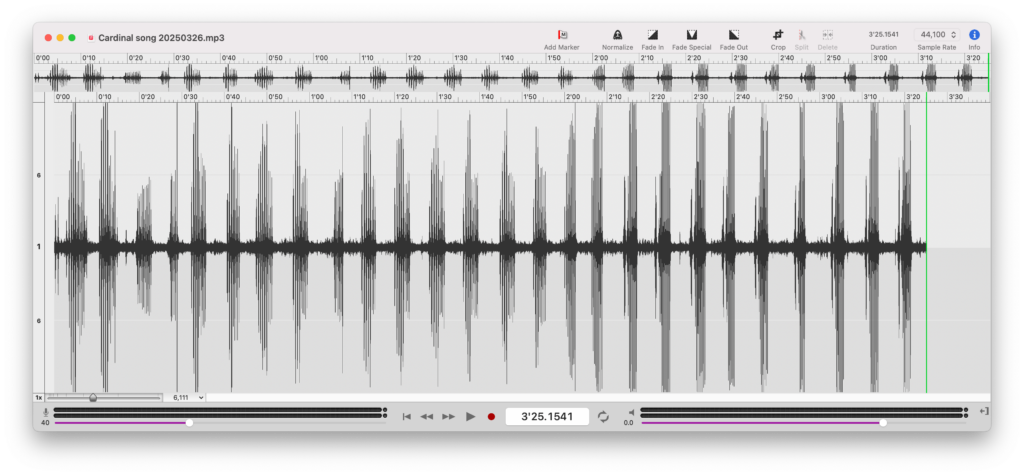bike: 35 minutes
run: 1 mile
outside: 32 degrees / snow
I finally decided to start watching the Apple+ show, See. A plague has wiped out all but 2 million people. The survivors are blind. At the time of the series, centuries later, vision exists only as a myth. The first episode begins in a remote village. I wanted to watch it because I’m curious how blindness is represented in the show. I should add that I am watching the show with audio descriptions on; I don’t think I’d be able to watch without them. My first question: what do they mean by blind? They never specify. Is it pure darkness, or can they detect some light?
The blind villagers function normally; they navigate with long sticks and dogs and ropes that are strung up all around the village. Also: wind chimes and bells. Many of them have extremely good hearing.
If you’re lying, I will hear. Nothing escapes my ears. I hear doors closing in your voice.
Just as I was stopping my bike, the evil queen appeared. I’m not sure what her deal is yet — I just know that she’s evil and she wants to kill the two babies that have just been born in the village because she hates their father and has a bounty on his head.
Do I like this show? Not sure. I’ll keep watching. One thing that was difficult — the fight scene between the queen’s henchmen, the witch finders, and the village, led by Jason Momoa. It was long and very visual — so much audio description.
While I ran I listened to the mood playlist: energy. Not sure why this is the case, but running actually helps loosen up my back when it feels a little tight. I only ran a mile, but it was enough. Now I’m tired and hungry!
before the run
In his introduction of the poem-of-the-day for the slowdown poetry podcast, Major Jackson says,
Today’s marvelous poem reminds me we exist in liminal zones where the extraordinary renders the ordinary visible and uncanny, an assertion of the imagination that makes our world shimmer.
episode 1321
The ordinary as uncanny, shimmering. I love this description and Heather Christle’s work for this reason. My lack of functioning cone cells makes more of the world uncanny and shimmering. Often, things are not quite and almost. Everything seems to be vibrating and pulsing, soft and slow. And my reliance on peripheral vision means I am much more aware of movement. Before, when my central vision worked, I had an easier time blocking that movement out, but now I see all of it. While this is a problem, it is also offers the possibility of seeing the world differently, of accessing the magic and wonder of it.
The Running of Several Simulations at Once May Lead to Murky Data/ Heather Christle
How do you say ‘inopportune’
in a small forest of cell phone towers
disguised as bizarrely regular trees?
I am asking in case it happens,
because anything can and even does.
Sometimes I want to shrink
and move into a miniature model village
mostly because the particular green
of the imaginary grass corresponds
with how my body believes joy would feel
if joy were to happen here on Earth,
where my eyes receive light in this
certain way: limited, but not
without pleasure. As a child
I visited one model village
so extensively constructed I fell
into a state of complete wonder—
‘They thought of everything!’
even the person running late
for the train, and the window
left slightly open to the storm—
and I should like to request
the arrival of this sensation in response
to the world at its actual scale—
just imagine! Someone
has even gone to the trouble
of filling the egg cartons
individually with smooth brown
eggs and one—such detail!—
has broken, but not enough
to be noticed before the carton
has been paid for and brought home.
Sometimes artificially I will
induce this feeling in myself
by going silent at a large
restaurant gathering, pretending
—until it is real—that each person
is speaking from a highly naturalistic script,
having carefully rehearsed each
tiny gesture, the mid-sentence reach
for the salt, and I fall immediately
in love with my companions,
in awe of their remarkable talent
for portraying with such detailed conviction
the humans I know as my friends.
I can’t quite put it into words, but this poem speaks to a conversation Scott and I were having last night. He was pointing out all of these minute details about our environment, like how the pinball machine was set up and leveled, and how that process affects game play and your enjoyment of it. There was something about the attention to the details and learning more about all the (almost) invisible things required to make a thing work properly and then describing that work as “care” work that is echoed in this poem.
Future Sara, will this make sense to you? It connects to being oriented toward care and wonder and finding delight in the small details.

